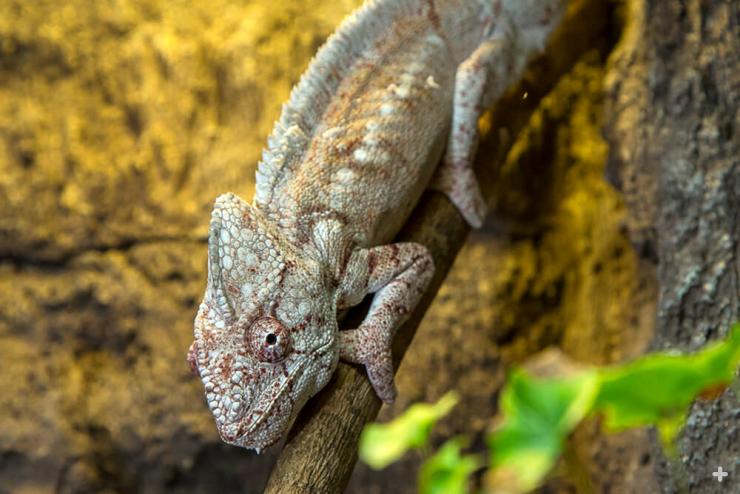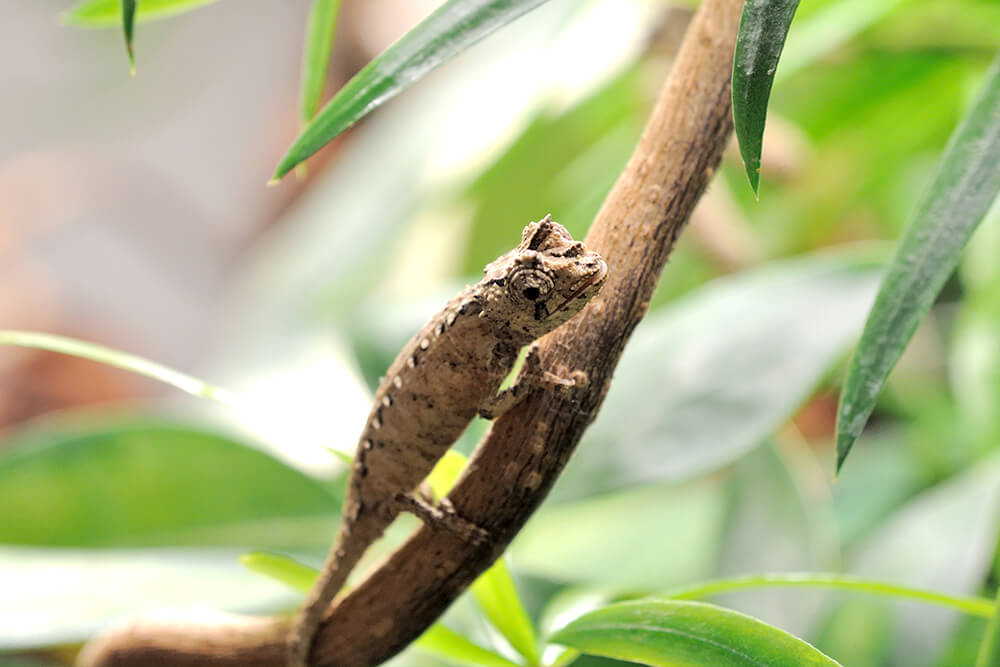Varieties are Found in the Chameleon

Wonderful reptiles. In the reptile world, there are a few peculiar shapes and shadings, however probably the most striking varieties are found in the chameleons. These vivid reptiles are known for their capacity to change their shading; their long, tacky tongue; and their eyes, which can be moved freely of one another.
Understand it. Chameleons go through their time on earth in trees and shrubberies. Most reptiles have five toes, yet the chameleon’s five toes are adjusted into gatherings: on the forefoot, the two external toes are joined to frame one gathering, and the three inside toes structure another; the rear foot has the contrary plan. This permits them to get a handle on branches very much like our thumbs and fingers can get a handle on objects.
The chameleon’s tail additionally assists with life as high as possible: most have a prehensile tail that can fold over tree limbs while climbing. Consequently, the chameleon’s tail can’t be severed and regrown like those of numerous different reptiles.
The eyes have it. The chameleon’s eyes are the most unmistakable among reptiles. Each eye has a flaky top molded like a cone, with just a little, round opening in the center for the understudy. The chameleon can pivot and concentrate its eyes independently to check out two distinct items simultaneously! This gives it an entire 360-degree view around its body. At the point when the chameleon sees prey, the two eyes can concentrate in a similar bearing to get a more clear view.
The inside scoop on skin. How chameleons change tone is an interesting and convoluted interaction. Most importantly, they don’t actually change tone to match their environmental factors, and they can’t change to all possible tones. For instance, assuming a chameleon is perched on a red-and-white spotted decorative liner, it won’t become red and create round, white spots! Chameleons don’t see what they’re perched on and intentionally choose to match it. All things being equal, every chameleon species has a gathering of examples and tones that it can show.
Chameleons have four layers of skin: the external, defensive layer, called the epidermis; the chromatophore layer, which contains yellow and red shades; the melanophore layer, which has the dim shade melanin and can make brown and dark tones or reflect blue; and the under layer, which just reflects white. Nerve motivations and chemical changes make the shading cells in these layers extend and contract, and the mixing of the various layers makes the tones and examples that we see.
Through the field of bioinspiration, researchers and architects are burrowing profound to find what compound and natural systems permit chameleons to change tone. Up to this point, a model T-shirt that changes shading has been made with the very cycle that the chameleon employments.
A water-getting casque. The hidden chameleon is an enormous chameleon found in the mountain locales of Yemen and Saudi Arabia where there is next to no water. Guys and females vary enormously in size, with the guys being a lot bigger, albeit both have an embellishing development on their head that seems as though a party cap yet is known as a casque. The casque behaves like a water authority: around evening time, drops of dampness roll down the casque and into the chameleon’s open mouth!
Guys likewise have a spike on every rear leg. Hidden chameleons are omnivores, eating creepy crawlies, leaves, and blossoms. Female hidden chameleons can deliver three grasps of eggs a year. Each grasp might have 20 to 70 eggs and require 6 to 9 months to incubate.

Little secrets. Brookesia is a chameleon class found in Madagascar and its individuals are viewed as the world’s littlest chameleons. Brookesia chameleons have a short, non-prehensile tail. Most in this variety were simply recognized to science inside the most recent 30 years and don’t have normal names. Because of their little size and clandestine nature, they have not been contemplated as much as their bigger family members.
There are presently 26 perceived species in the Brookesia variety. We actually have a lot to find out with regards to these astounding reptiles!
Where could home be? All chameleons are found in Africa, Asia, and Europe, yet generally live in Madagascar and Africa. The rest are found in the Middle East, a couple on islands in the Indian Ocean, and one, the Indian chameleon, in India, Pakistan, and Sri Lanka. Another, the normal chameleon, is local to Spain, Portugal, the islands in the Mediterranean Sea, and the Near East.
Chameleons live in an assortment of living spaces, from rainforests and swamps to deserts, semi-deserts, clean savannas, and even mountains. Many occupy trees, yet some live in grass or on little shrubberies, fallen leaves, or dry branches.
Namaqua chameleons live in Africa’s Namib Desert, where they dive openings in sand ridges to get away from the outrageous hotness and cold. Sail-balance chameleons possess the montane woodlands of Cameroon, in West Africa, where mountains ascend to cloud level and are covered in mist; it’s a cool, wet, dribbling spot of little sun.
Quick terminating tongue. Chameleons for the most part eat bugs like beetles, mantids, grasshoppers, stick creepy crawlies, and crickets. A few bigger chameleons additionally eat little birds and different reptiles. A couple have been known to eat a touch of plant material.
Chameleons don’t move around exceptionally quick, so they use their extraordinarily long tongue to get the creepy crawlies they eat. They can stick the tongue out of their mouth rapidly. The tongue has a tacky tip on the finish to catch prey things that they would some way or another always be unable to get.
The finish of the tongue is a chunk of muscle, and as it hits its prey, it quickly frames a little attractions cup. When the prey adheres to the tongue, the chameleon steps it back into the mouth, where its solid jaws crush it for gulping. Indeed, even little chameleons can eat enormous bugs. The tongue is kept clustered up at the rear of the mouth until it is required once more.
The biomechanics of the chameleon’s tongue are of incredible interest to the field of bioinspiration.
The chameleon’s changing skin shading assumes a significant part in correspondence among people. It changes affected by the reptile’s disposition, like dread or outrage, how much light, and the temperature or dampness. Guys that can make themselves more brilliant are more prevailing and draw in more females. An agreeable male showcases brown or dim. Females use their shadings to acknowledge or dismiss a male; their shading show can likewise flag a pregnancy.
Settling sense. Most female chameleons lay eggs. The quantity of eggs laid changes. At the point when the eggs are fit to be laid, the female trips to the cold earth and burrows an opening. She stores the eggs in the opening, covers them, and leaves the settling site. During hatching, the eggs assimilate water from the earth and can acquire up to 0.14 ounces (4 grams) in weight. There are a couple of chameleons, for example, the Jackson’s chameleon, that are viviparous.
A couple of days after the youthful seal or are conceived, they start to chase creepy crawlies. They instinctually know how to make due without a parent to instruct them. The hatchlings seem as though scaled down grown-ups, then again, actually their hue and markings are not as splendid. They develop rapidly, and many arrive at sexual development before the finish of their first year.
The Jackson’s chameleon is local to the sticky, cooler areas of Africa’s Kenya and Tanzania. It is normally found in extraordinary numbers in precipitous regions. One subspecies was acquainted with Hawaii during the 1970s and has since developed into a huge, wild populace. The Jackson’s chameleon is a little to medium-sized chameleon most popular for its sawtooth-molded dorsal edge.
The female Jackson’s chameleon is one of a handful of the chameleons that give live birth as opposed to laying eggs—from 8 to 30 live youthful following a 5-to half year incubation period.
Jackson’s chameleons are at times called three-horned chameleons since guys have three earthy colored horns (the females as a rule have no horns). The horns are utilized to protect an area. On a limited tree limb, guys might clash and attempt to push the other off. Jackson’s chameleons are normally radiant green, for certain hints of blue and yellow, and are generally less regional than most types of chameleons.
Madagascar is home to almost 66% of all chameleon species. Three of those—Belalanda chameleon Furcifer belalandaensis, strange nosed chameleon Calumma hafahafa, and Namoroka leaf chameleon Brookesia bonsi—are at basic danger, losing their environment to slice and-consume farming works on, logging for development or charcoal, and dairy cattle eating.
Loss of living space influences different chameleons also, as does assortment for the pet exchange.





